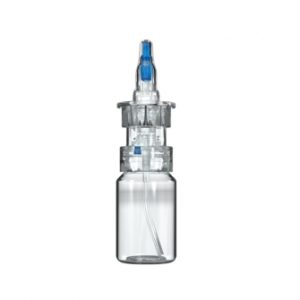Introduction
In recent years, systemic nasal drug delivery has garnered significant attention in the pharmaceutical industry due to its potential in offering a non-invasive route for drug administration. This article delves into the intricate mechanism of Systemic nasal drug delivery, shedding light on its efficacy and applications.
Understanding Nasal Drug Repositioning
What is Nasal Drug Repositioning?
Nasal drug repositioning involves the exploration of existing nasal medications for their systemic effects beyond their originally intended purpose. It encompasses the repurposing of nasal drugs for systemic conditions, leveraging the unique properties of nasal mucosa for efficient drug absorption.
Advantages of Nasal Drug Repositioning
Nasal drug repositioning offers several advantages, including:
- Expeditious drug absorption into systemic circulation.
- Bypassing the gastrointestinal tract and first-pass metabolism.
- Enhanced patient compliance and convenience.
- Potential cost savings through the utilization of existing drugs for new indications.
Exploring Systemic Nasal Drug Delivery
The Nasal Mucosa: Gateway to Systemic Circulation
The nasal mucosa plays a pivotal role in systemic nasal drug delivery. Its rich vasculature and large surface area facilitate rapid drug absorption into the bloodstream. The mucosal epithelium, comprising various cell types and tight junctions, regulates the permeability of drugs into underlying tissues.
Mechanism of Drug Absorption
Upon administration, drugs traverse the nasal epithelium through various mechanisms, including passive diffusion, active transport, and endocytosis. Factors such as molecular size, lipophilicity, and ionization influence the rate and extent of drug absorption.
Challenges and Considerations
While systemic nasal drug delivery offers numerous benefits, it also presents challenges such as:
- Nasal irritation and discomfort.
- Variable drug absorption due to individual differences in nasal anatomy and physiology.
- Risk of local adverse effects, including nasal mucosal damage and congestion.
- Limited drug compatibility with nasal formulations.
Applications in CNS Drug Delivery
Targeting the Central Nervous System (CNS)
Systemic nasal drug delivery holds promise for CNS drug delivery, offering a direct route to bypass the blood-brain barrier (BBB). This approach is particularly advantageous for the treatment of neurological disorders, including Alzheimer’s disease, Parkinson’s disease, and migraine.
Enhancing Drug Bioavailability
By circumventing the BBB, nasal drug delivery enables enhanced drug bioavailability in the brain parenchyma. This can lead to improved therapeutic outcomes and reduced systemic side effects compared to conventional oral or parenteral administration.
Innovations in OINDP Technology
Optimizing Intranasal Drug Delivery Products (OINDP)
Innovations in OINDP technology aim to overcome the limitations associated with traditional nasal formulations. These include the development of novel drug carriers, such as nanoparticles and liposomes, to improve drug stability, mucoadhesion, and targeting.
Future Directions and Research Trends
Ongoing research in systemic nasal drug delivery focuses on:
- Tailoring formulations for specific drug molecules and target tissues.
- Enhancing nasal permeation through the use of permeation enhancers and mucoadhesive agents.
- Investigating novel drug delivery routes within the nasal cavity, such as olfactory and respiratory regions.
Conclusion
Systemic nasal drug delivery represents a promising approach for achieving systemic drug effects through non-invasive administration. By harnessing the unique properties of the nasal mucosa, this delivery route offers opportunities for improved therapeutic outcomes and patient care, particularly in the realm of CNS drug delivery.



